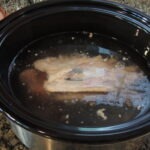 Going gluten-free is certainly much easier than it used to be. You can find a gluten-free equivalent for just about anything, plus many staples that are naturally gluten-free. Rice, quinoa and millet are good examples of the latter, so please check out our How to Cook Basic Grains recipes for rice, millet and quinoa. Oats are somewhat controversial because their proteins are very similar to those of wheat. However, many people who can’t tolerate wheat can in fact digest oats just fine. Oats that are labeled “gluten-free” were not processed or packaged on equipment that also processes or packages products containing gluten (like wheat).
Going gluten-free is certainly much easier than it used to be. You can find a gluten-free equivalent for just about anything, plus many staples that are naturally gluten-free. Rice, quinoa and millet are good examples of the latter, so please check out our How to Cook Basic Grains recipes for rice, millet and quinoa. Oats are somewhat controversial because their proteins are very similar to those of wheat. However, many people who can’t tolerate wheat can in fact digest oats just fine. Oats that are labeled “gluten-free” were not processed or packaged on equipment that also processes or packages products containing gluten (like wheat).
In addition, you might have other items in your pantry that can be problematic and require a little diligence when shopping:
- Soy sauce – can have added gluten. Most good quality soy sauces don’t, but look for one that specifies “gluten-free” on the label. This includes tamari and shoyu sauces.
- Salad dressing, marinades and sauces – often have added gluten as a thickener. That’s why we make our own. They’re easy to make, you control what’s in them, and they’ll cost less and taste better! (If you’re in a hurry though, you can find many now that are marked “gluten-free.”)
- Bread crumbs – regular or Panko breadcrumbs are made from wheat. However, there are gluten-free versions that work very well. We like Glutino Gluten-Free Bread Crumbs. It’s important to note here that whenever you’re in a restaurant that serves a dish with light breading, it almost always uses bread crumbs or wheat flour, so beware. Even items breaded with a nut crust often contain some flour to bind the crust together.
- Flour – This brings us to the obvious problems in following a gluten-free diet on a budget. There are many types of gluten-free flours out there, but they’re more expensive than regular wheat flour. That’s why you’ll want to buy wisely. One of the easiest ways to bake with a gluten-free flour is to buy the somewhat new 1-to-1 Flour by Bob’s Red Mill. This flour is a blend of ingredients and is designed to work as a direct substitution for regular wheat flour in baked goods like cakes and cookies. It eliminates the need to buy several different flours and enhancers (like xanthum gum). However, there are limitations. There’s no reason to use it for thickening sauces or dredging fish fillets. In these instances, we prefer an all-purpose gluten-free flour and/or tapioca starch. Tapioca starch is a great substitute for cornstarch as a thickener in any kitchen, gluten-free or not. Some people have problems digesting corn, and some just prefer to avoid genetically modified corn which is used in most cornstarch these days. It also combines well with all-purpose gluten-free flour for baking, if you don’t use the 1-to-1 flour. For a special treat, we buy almond meal, which is not cheap but makes incredibly moist and nutritious cakes. (See Almond, Fig and Olive Oil Cake)
- Baking mixes – Baking from scratch will almost always save you money and create a healthier product. However, there’s a time and place for mixes. We like Pamela’s GF Baking and Pancake Mix as well the GF Pizza Crust Mix. They make the most delicious gluten-free pancakes and pizza crusts we’ve eaten, and the mixes are so easy to use! However, when it comes to gluten-free brownies, cakes and cookies, we’re working on a number of recipes we think you’ll enjoy. Keep checking back as we add more recipes and be on the lookout for our cookbook that we hope to publish soon.
- Breads and baked goods – If you want to bake your own GF bread, there are many cookbooks out there. For the most part, Rebecca (our gluten-intolerant family member), just doesn’t eat bread. She’s a big fan of corn tortillas and Mexican food in general, so that’s not a big problem. You can find a gluten-free version of just about any bread now, although they will taste different and have a more crumbly texture. Sometimes gluten-free products are not even very healthful, so read the label and choose wisely if you want gluten-free bread.
Stocking a gluten-free pantry is only a little more complicated than stocking a regular one, since most of our staples are naturally gluten-free. (For example, canned tomatoes, beans, rice, etc.) If you don’t bake, it’s as simple as making your own dressings, marinades and sauces, reading labels, and having a little tapioca starch for thickening and some all-purpose gluten-free flour for breading.
Since gluten-free items can be more costly, we highly recommend ordering from Vitacost, a discount online vitamin and health food store. They also have a large variety of items to choose from to stock your pantry whether you are looking for gluten-free products or not. Use this link and receive $10 off your first order for new customers.
Have questions about stocking your pantry to be gluten-free? Comment below and we will be sure to answer them!

